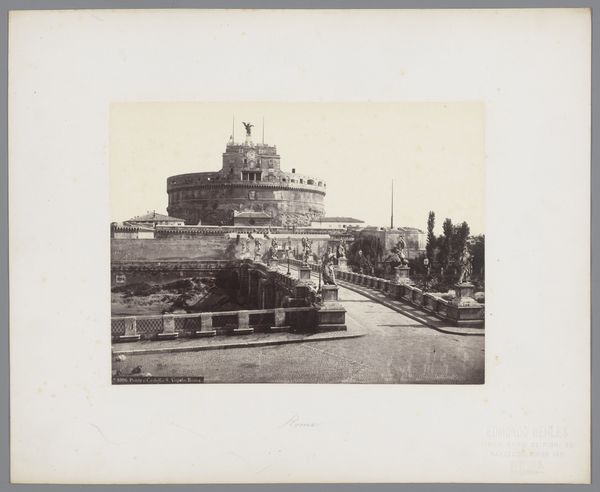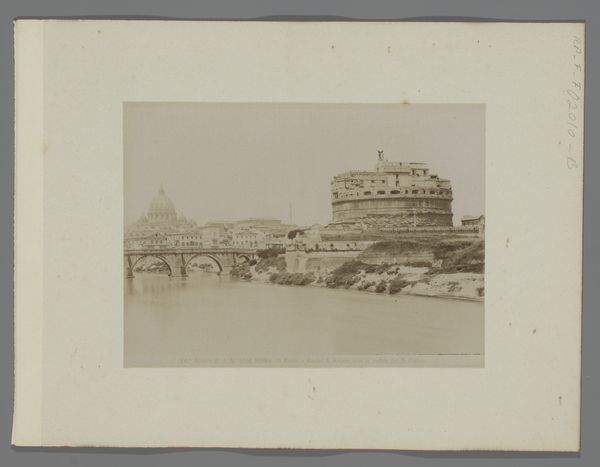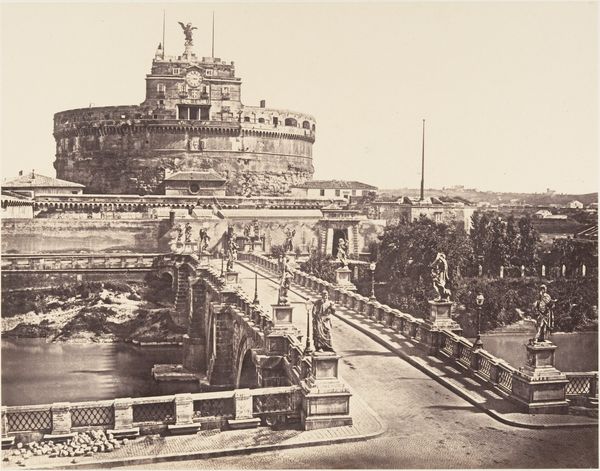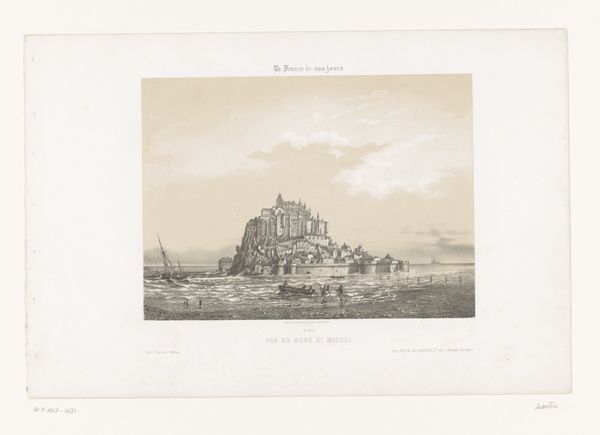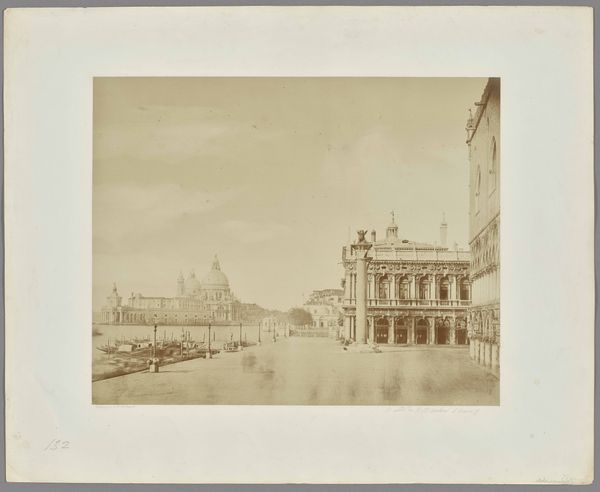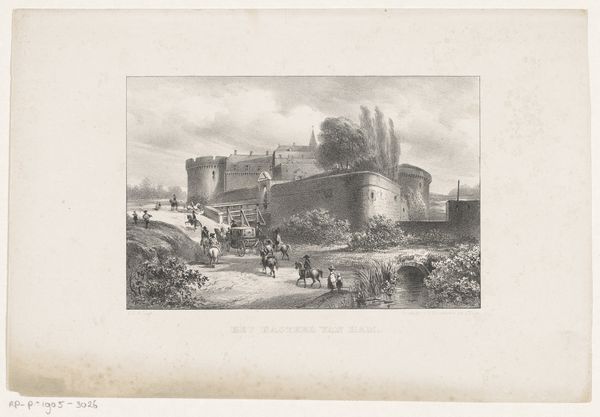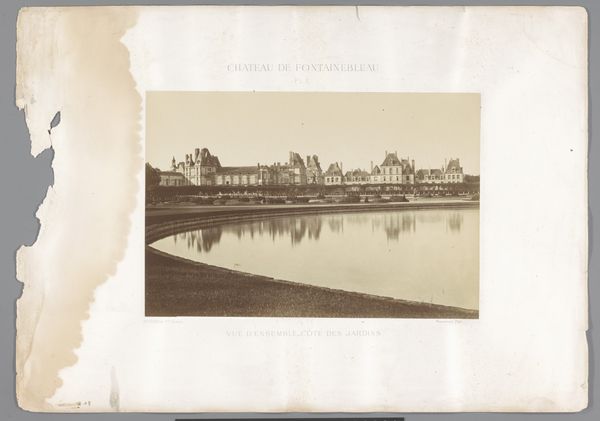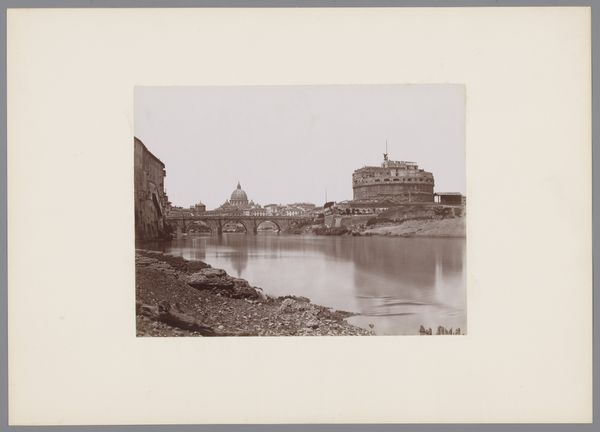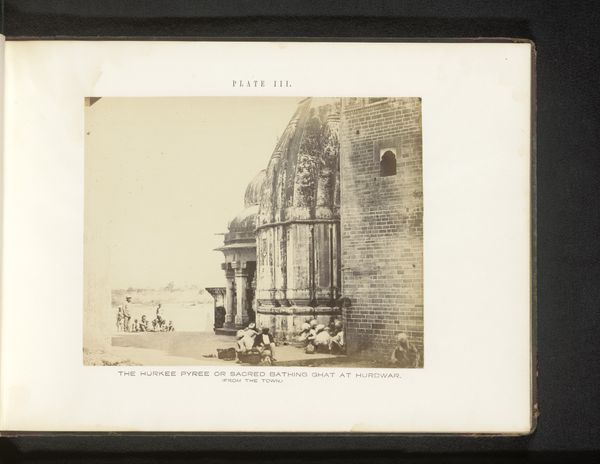
print, photography
# print
#
photography
#
romanesque
#
cityscape
Dimensions: height 318 mm, width 445 mm
Copyright: Rijks Museum: Open Domain
Editor: Here we have Giacomo Brogi's photograph, taken sometime between 1864 and 1881, depicting the Castel Sant'Angelo and Ponte Sant'Angelo in Rome. It’s striking how the sepia tones create such a tangible sense of history. What strikes you most about it? Curator: I find myself considering the labor embedded in its production. Think about the material conditions – the sourcing of photographic materials, the construction of the camera, the darkroom work. It is about industrial progress, in tension with this view of ancient grandeur. Editor: I hadn't considered it that way! It's easy to just see the historical scene, and miss that. The printing process, though, feels almost like a bridge between traditional craft and the rise of mass media. Curator: Exactly. Consider how the print medium makes this image accessible to a wider audience. It democratizes the image, and the consumption of art is intrinsically related to its value. Was its beauty the key, or was this more about recording and documentation? How does this accessibility impact our understanding of Rome itself, transforming a physical experience into a commodity? Editor: So, it becomes less about the spiritual or aesthetic experience of the place, and more about the mechanics of how we consume it? Curator: In part, yes. What are the cultural and economic implications? The photographer mediates the experience, shaping how future generations will envision this cityscape, almost mass producing 'culture'. Editor: It’s like the photograph becomes a stand-in for the real experience. It’s made me realize I focus more on what is depicted and now more on how things are being depicted, and what conditions made that possible! Curator: Indeed, understanding the materiality and the social context helps unpack the work’s full impact, and the nature of 'fine art' is deeply connected to how and by whom art is consumed.
Comments
No comments
Be the first to comment and join the conversation on the ultimate creative platform.
